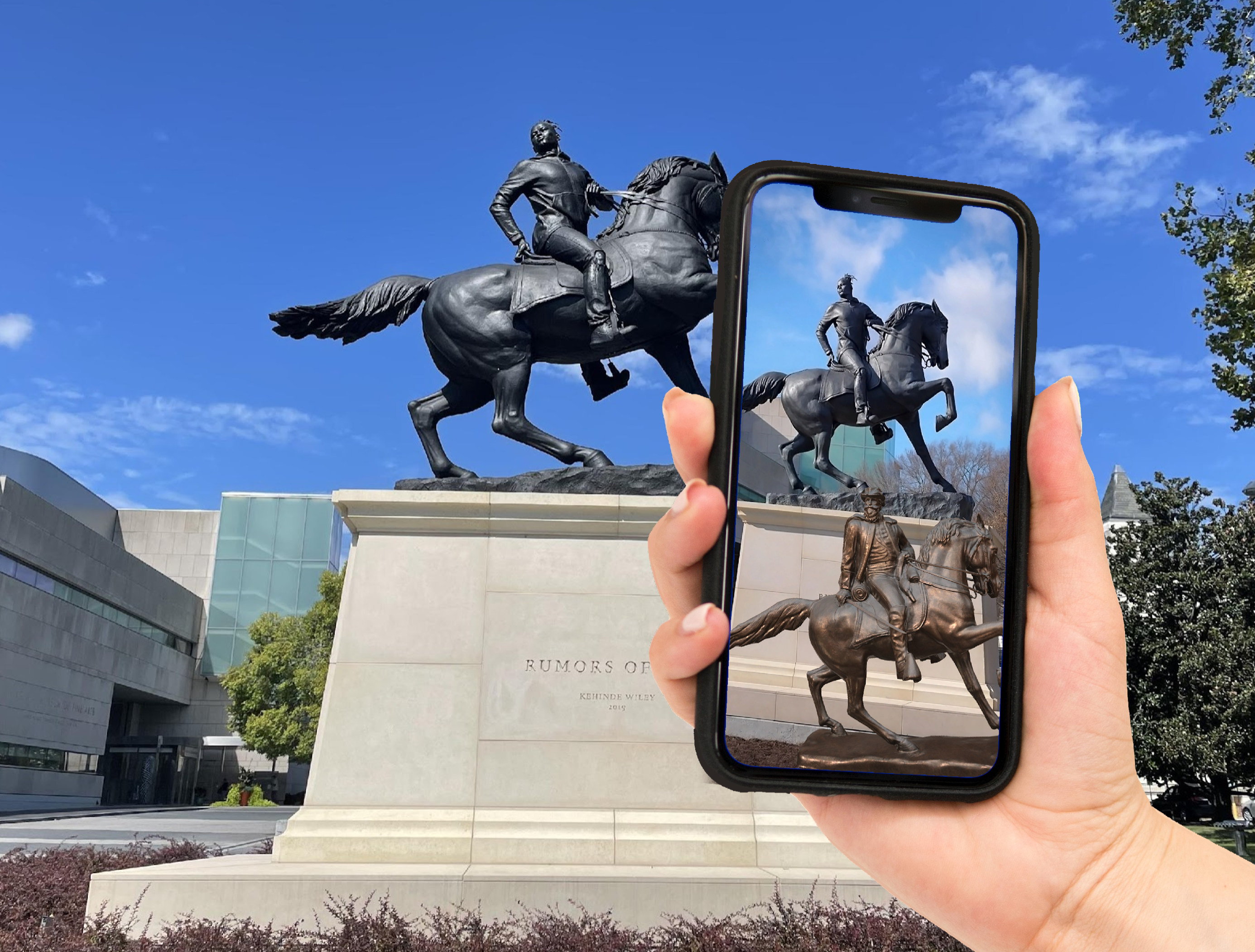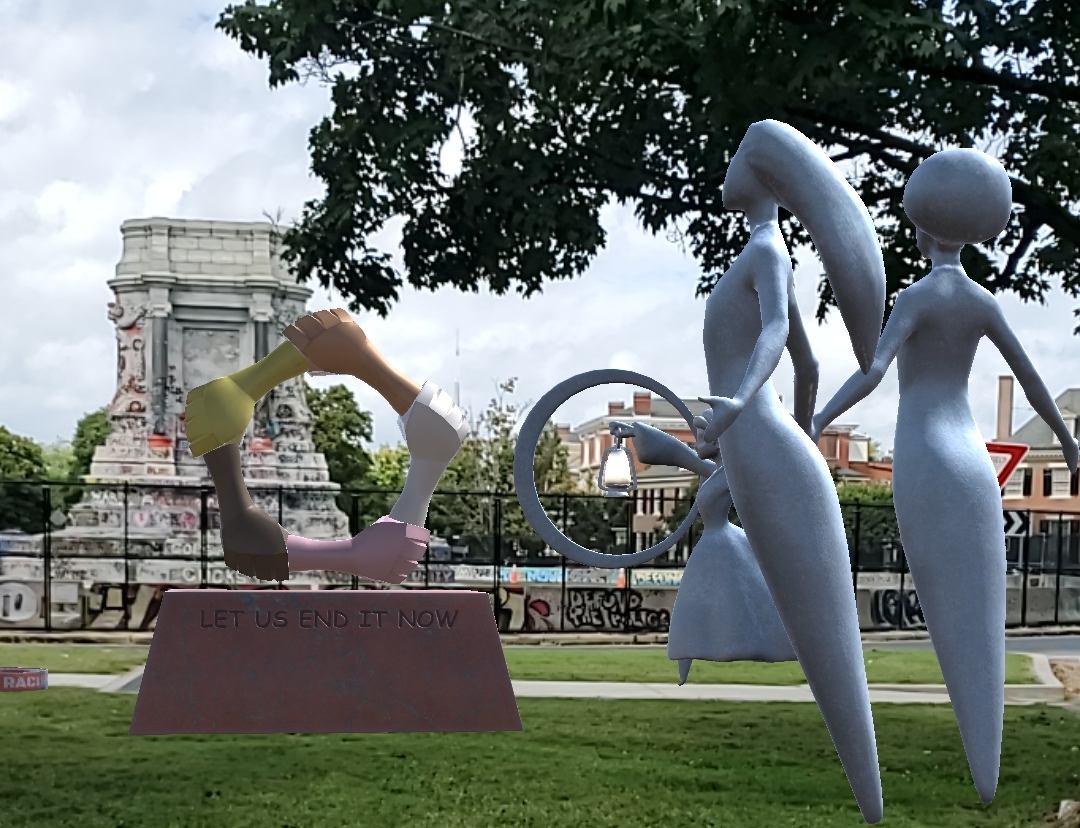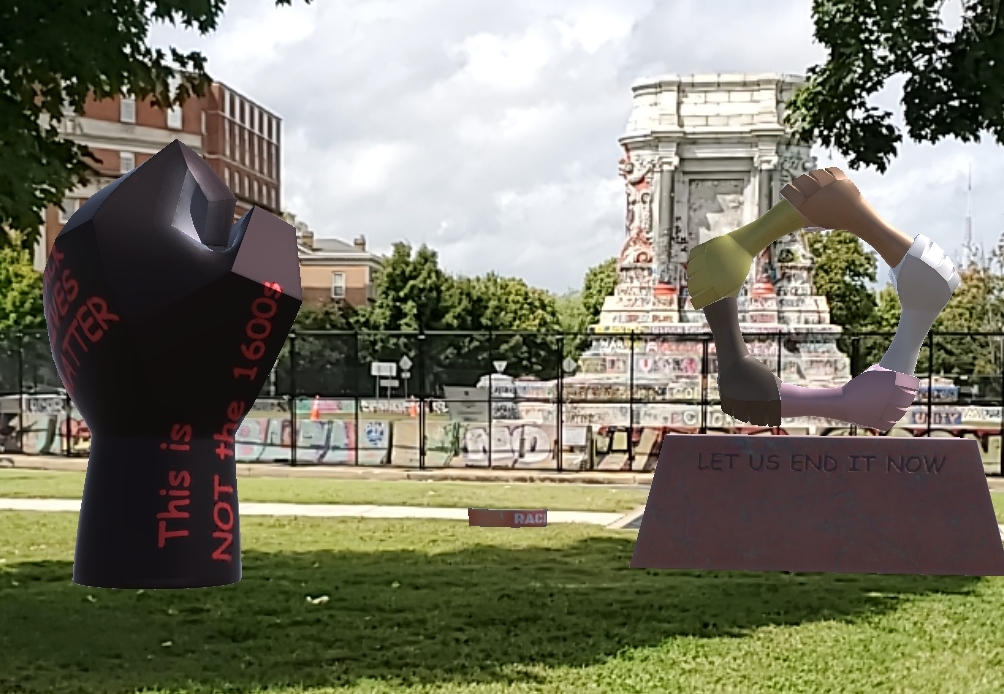





Client: Richmond Public Schools
Location: Richmond, VA, United States
Completion date: 2021
Project Team
Creative Direction, Creative Technologists
Novaby
Community Outreach and Coordination
Richmond Public Schools
Co-design and creation
100+ students, community members and stakeholders
Co-design and creation
Virginia Museum of Fine Arts, The Black History Museum of Virginia, Virginia Museum of History and Culture, The Valentine Museum, New American History, Venture Richmond, Visit Richmond, Mending Walls, City of Richmond, Naptime Studio, World Learning
Overview
This art-based, interactive augmented reality (AR) history experience takes visitors on a 1.2 mile walking tour along Monument Avenue and Arthur Ashe Blvd in Richmond, VA. The tour centers inclusive, under-told stories of Black resistance and resilience on one of America’s most historic and controversial streets in order to foster clear-headed, fact-based conversation about our shared past, present, and future in Richmond and beyond. Co-created with and for Richmond Public Schools and over 100 community members and stakeholders, the tour also serves as an evolving showcase for local youth, artists and storytellers and is helping to facilitate and on-going public conversation about Richmond's future.Goals
Originally conceptualized in 2019 with the aim of telling the full story behind the confederate statues along Monumental Ave, the tour was reimagined by the community in the wake of the 2020 protests and monument removals to answer the question: How did we get here?
While acknowledging the difficult histories that needed to be shared, the community sought to inspire hope, spark curiosity, and empower residents and visitors to reimagine the City and Country’s future through the telling of a transparent, frank, and inclusive story about Richmond and Monument Avenue’s past and present that was also universal in its application and appeal.
Process
Believing the process is just as important as the outcome, Placemaking techniques and Collective Memory practice were used to deeply engage over 100 community members and stakeholders in the co-design and co-creation of the project. Community outreach was led by Richmond Public Schools (RPS) and built upon their previous, robust community engagement efforts to reimagine and rewrite their high school history curriculum centering themes and stories that felt current and relevant to their largely Black student population.
Over an 18 month period, students, parents, RPS staff, residents, local museums educators, lay and professional historians, artists, and City officials contributed their time, talents, and expertise to the project. A monument design curriculum was developed to support RPS students designing the AR monuments that populate the finale of the tour. Owing to the concurrent pandemic, new virtual-only ways of engaging stakeholders were innovated that have survived the project and improved community engagement on similar efforts moving forward.
Participants contributed their stories, voices, and artworks to the tour. These can be changed out over time to showcase the work of local youths, artists, and storytellers, and facilitate on-going public conversations
Additional Information
The augmented reality tour is publicly available and was designed as a location-based experience. The tour is also available remotely (in modified form) through the project website at www.monumentalconversations.org. The tour begins at the Virginia Museum of Fine Arts and continues along Arthur Ashe Blvd and Monument Ave. It concludes at what was previously known as Lee Circle, the site of on-going, historically important protests and organic, grass-roots placemaking efforts and community initiatives. Under the advice of the community, the JEB Stewart and Jefferson Davis statues were digitally re-sculpted from scratch and included in the tour. The community felt these statues had unique pedagogical and contextual import for the tour. The Jefferson Davis statue was the only statue torn down by the protesters themselves. It is depicted in the toppled, paint-splattered position the protesters left it in. The project was partially enabled by a grant from the U.S. Department of State, Bureau of Educational and Cultural Affairs.